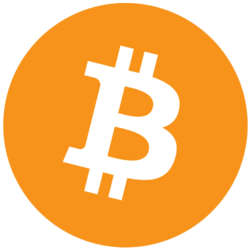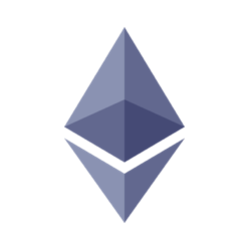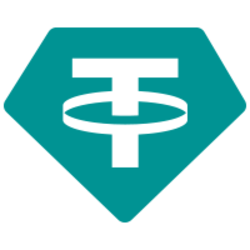The GameFi Q1 2025 industry has reached remarkable heights in the first quarter of 2025, with daily active users exceeding 1 million and optimistic forecasts suggesting a potential market valuation of $50 billion. This report provides an in-depth look at the key advancements in user engagement, blockchain activity, and revenue trends, while also addressing the challenges and opportunities that are shaping the future of this dynamic sector.
Major Insights
- The number of daily active users has crossed the 1 million threshold in Q1 2025, yet 60% of players tend to leave games within the first month.
- Solana leads the charge, accounting for 50% of application fees, while Ethereum captures 20-30% of trading volume.
- The current market cap for GameFi stands at $26.5 billion, compared to the staggering $177.9 billion generated by traditional gaming.
- Despite growth, retention issues remain, prompting successful projects to adopt AI-driven engagement strategies.
- Projections indicate a potential $50 billion valuation by year-end as established gaming studios explore blockchain opportunities.
User Growth Patterns
In Q1 2025, the GameFi ecosystem has experienced significant user growth, with daily active users surpassing 1 million—a striking increase from just 63,000 in early 2021. This upward trend aligns with broader industry forecasts predicting a $50 billion market size by the end of the year, as reported by TRONDAO.
However, the sector faces notable retention challenges. Over 60% of Web3 gamers abandon their games within the first month, primarily due to inadequate game mechanics and a lack of long-term incentives. This trend highlights the gap between initial interest and sustained player engagement.
Some projects have successfully countered this trend through innovative retention strategies. For example, SERAPH: In The Darkness has managed to maintain around 200,000 active users by implementing:
- Adaptive gameplay that evolves based on player choices
- Loyalty reward systems that grow over time
- Community-focused development that prioritizes player feedback
- Balanced tokenomics that reward skill rather than speculation
The entry of traditional gaming studios into the blockchain space has accelerated mainstream adoption. These established companies bring professional game design expertise and existing fan bases, effectively bridging the gap between conventional gaming and GameFi experiences. This cross-pollination has been pivotal in pushing daily active user numbers beyond the 1 million threshold, according to the latest analysis of GameFi industry trends.
Blockchain Activity Overview
The blockchain activity in Q1 2025 underscores Solana’s dominant position in the GameFi landscape, accounting for approximately 50% of all application fees. This leadership is largely driven by memecoin speculation and decentralized exchange trading, establishing Solana as the preferred platform for GameFi developers seeking scalability and low transaction costs.
Ethereum remains a significant player, capturing 20-30% of trading fee share. Although its higher gas fees have historically limited its gaming applications, layer-2 solutions have enhanced its viability for GameFi projects that require robust security and established liquidity pools.
The GameFi market report also notes the rise of Telegram Mini-Apps as a noteworthy trend in Q1 2025. Tap-to-Earn (T2E) platforms like Notcoin and Hamster Kombat have attracted millions of users through user-friendly interfaces and seamless payment integrations with ApplePay and PayPal, lowering barriers for cryptocurrency newcomers.
Other chains demonstrating strong GameFi activity include:
- Base – Utilizing Coinbase’s user base for simplified onboarding
- Injective – Attracting sophisticated trading games with its order-book functionality
- TON – Leveraging Telegram’s vast user base with low-friction gaming experiences
The success of Phantom Wallet, which has broken into the iOS top-ten rankings, further illustrates Solana’s momentum in the gaming sector, reflecting a growing mainstream interest in accessible blockchain applications.
Revenue Comparison: Traditional vs. Blockchain Gaming
The revenue comparison between traditional and blockchain gaming reveals both opportunities and disparities. The U.S. commercial gaming sector generated $6.51 billion in January 2025 alone, marking an 11.9% year-over-year increase, according to the American Gaming Association. Within this, iGaming revenue reached $827.2 million, growing at an impressive 34.7% annually.
Mobile gaming continues its upward trajectory globally, increasing 6% year-over-year to reach $97.6 billion. This growth starkly contrasts with declines in the PC (-10%) and console (-15%) segments. The mobile-first approach of many GameFi projects positions them well to capitalize on this trend.
In Q1 2025, blockchain gaming generated $1.64 billion in trading volume, with a token market capitalization of $12.89 billion. While these figures are substantial, they still represent only a fraction of the traditional gaming industry’s $177.9 billion global revenue, indicating significant growth potential for the GameFi sector.
The iGaming segment has shown particularly strong performance in specific regions:
- Pennsylvania reported $268 million in revenue.
- Delaware experienced a remarkable 162% surge.
- New Jersey maintained steady growth, bolstered by ongoing regulatory support.
These statistics from the GameFi Q1 2025 report illustrate that while blockchain gaming has made meaningful strides, its economic impact remains modest compared to the broader gaming industry, suggesting a wealth of untapped potential.
Leading GameFi Projects of Q1 2025
Several standout projects have emerged in the GameFi landscape during Q1 2025, setting new standards for user engagement and economic design. World of Dypians leads the pack with 1.4 million active users, successfully creating a player-driven economy where in-game assets hold real utility beyond mere speculation. Its staking rewards system fosters sustainable economic loops that keep players invested over the long term.
SERAPH: In The Darkness has retained 200,000 dedicated users through dynamic gameplay that evolves based on community input. The project’s loyalty incentives reward consistent engagement rather than just financial investment, addressing the retention issues that many GameFi projects face.
Pixels has gained recognition for its innovative cross-chain approach, allowing seamless asset transfers between Ethereum and Ronin. This interoperability reflects the industry’s shift towards chain-agnostic gaming experiences that prioritize player convenience over technical limitations.
These leading projects share several common factors that drive their success:
- Community-driven development cycles with transparent roadmaps.
- Sustainable tokenomics that balance earning potential with in-game utility.
- High-quality gameplay mechanics that stand independently of blockchain features.
- Cross-platform accessibility that reduces technical barriers to entry.
Their alignment with broader trends in community governance and interoperability positions these projects for continued growth throughout the year.
Challenges Hindering GameFi Adoption
Despite the impressive growth, the GameFi sector continues to face significant hurdles in adoption. Player retention remains a critical issue, with projects that fail to implement AI and user experience innovations experiencing a 30-40% drop in user retention. This reinforces the necessity for gameplay that remains engaging beyond initial token incentives.
Regulatory uncertainty poses ongoing compliance challenges, particularly with the SEC’s tendency to classify ERC-20 gaming tokens as securities. The CyberKongz litigation has set concerning precedents for developers, complicating token design and distribution strategies. This regulatory environment has stifled innovation in certain jurisdictions.
Market saturation has also led to decreased venture capital interest, with monthly funding dropping to approximately $100 million from peaks exceeding $1 billion in 2021-2022. This funding contraction has compelled projects to prioritize sustainable business models over speculative tokenomics.
Technical limitations continue to impede mainstream experiences:
- Transaction speeds are often insufficient for real-time gameplay on some chains.
- Wallet usability remains a barrier for non-technical users.
- Cross-chain asset transfers can be complicated for average players.
- Scalability constraints arise during peak usage periods.
The decline in purely speculative interest has created a challenging environment for tokenized gaming projects that lack substantive gameplay. This market correction has prompted developers to refocus on creating genuinely engaging experiences that can retain players independent of token price fluctuations.
Emerging Opportunities Reshaping the Sector
Amid these challenges, several transformative opportunities are reshaping the GameFi landscape in 2025. The implementation of generative AI has significantly enhanced NPC interactions and anti-cheat systems, boosting player engagement by 30-40% for early-adopting projects. Games like KGeN illustrate how AI can craft dynamic narratives that adapt to individual player behaviors, resulting in uniquely personalized experiences.
Multi-chain interoperability solutions have unlocked new cross-chain possibilities, enabling seamless NFT transfers between previously isolated ecosystems. Polygon and Ronin are at the forefront of this trend, allowing players to move assets across chains with minimal friction. This interoperability reduces fees and simplifies the user experience, addressing key barriers to mainstream adoption.
Potential regulatory easing under new U.S. leadership has revitalized developer interest in the North American market. This shift encourages projects that previously focused on Asia-Pacific regions to reconsider global expansion strategies, potentially broadening the user base for GameFi applications.
Other significant opportunities include:
- Mobile-first development approaches that align with broader gaming trends.
- Integration with existing Web2 game distribution platforms.
- Improved onboarding experiences that reduce technical complexity.
- Innovative tokenomics models that prioritize utility over speculation.
Games like Age of Dino demonstrate how focusing on player engagement rather than token economics can create sustainable GameFi ecosystems. By incorporating these emerging technologies and strategies, developers are addressing the fundamental challenges that have previously limited the sector’s growth potential.
Future Outlook: Predictions for Q2 2025 and Beyond
As we look ahead, AI-driven personalization is expected to become a standard feature in top-tier GameFi projects by Q2 2025. These systems will dynamically adjust gameplay difficulty, rewards, and narrative elements based on individual player behaviors, creating uniquely tailored experiences that significantly enhance retention metrics.
The GameFi landscape is likely to undergo considerable consolidation as larger projects acquire smaller ones with complementary technologies or user bases. This trend may lead to the emergence of comprehensive GameFi ecosystems rather than isolated individual games, fostering a more interconnected gaming environment.
Institutional investment patterns are shifting towards projects with sustainable business models that generate revenue beyond mere token appreciation. This represents a maturation of the sector, moving from speculative funding to value-based investment approaches.
Several key developments are anticipated in the coming quarters:
- Traditional gaming companies are expected to accelerate their integration of blockchain technologies.
- Cross-platform play is likely to become standard for major GameFi titles, enhancing player accessibility.
- Improved token utility models will help reduce market volatility, making investments more attractive.
- Enhanced social features will foster stronger community cohesion, encouraging player loyalty.
User growth projections indicate the potential for 1.5 billion active GameFi users globally by the end of 2027, driven by the expansion of mobile-first experiences in emerging markets and improved user onboarding through wallet abstraction and fiat onramps.
Additionally, regulatory clarity in key jurisdictions is anticipated to unlock new capital flows and foster innovation in token design and player reward mechanisms. As frameworks stabilize, we may also see more compliant GameFi projects listing on mainstream exchanges, improving liquidity and investor confidence.
The role of AI will continue to expand—not only in gameplay personalization but also in game development itself. AI-generated assets, storylines, and NPC behaviors will accelerate production timelines and reduce costs, enabling indie developers to compete more effectively with larger studios.
Finally, interoperability between GameFi ecosystems could define the next era of blockchain gaming. Projects that facilitate the movement of assets, achievements, and identities across titles will be well-positioned to capture long-term player loyalty and reshape expectations within the gaming community.
In summary, the GameFi sector is rapidly evolving—from hype-driven speculation to a more sustainable, integrated, and player-centric model that prioritizes long-term engagement and utility. As the industry continues to mature, it holds the promise of transforming the gaming landscape, offering players richer experiences and developers new avenues for innovation and growth.





